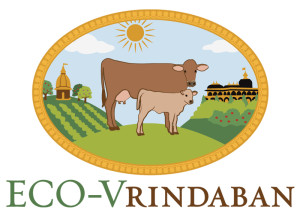These days fewer people are interested in taking up anything that they cannot immediately apply to their lives. The common question is: “What is this going to do for me?” Or “What am I going to get out of this?” So if we cannot relate the purpose of Vedic culture or its spirituality to people today, especially to the youth, then it is not likely they will take an interest. Yet, everyone is interested in gaining more out of life, or reaching their higher potential, which, actually, has been the purpose of the Vedic system from time immemorial. Yet we have either forgotten that, or have failed to present that purpose properly. So this is one angle we can use to impress the importance of Vedic culture and its spiritual philosophy to people today.
Everyone should want to reach their highest potential. But to do this we also need to focus on our spiritual potential, which is actually a way to become much more refined, developed and useful than merely focusing on our material possibilities, or only developing marketable skills for earning a big paycheck.
The Sri Isha Upanishad, Mantra 11, explains: “Only one who can learn the process of nescience (or material knowledge) and that of transcendental knowledge side by side can transcend the influence of repeated birth and death and enjoy the full blessing of immortality.”
One point here is that through the advancement of material knowledge we do not solve the problem of our reincarnation or being completely free from repeated birth and death through numerous situations in this material world. We have no idea how many lives we have lived, nor how many more we will go through unless we add the study and application of spiritual knowledge to our lives. What is the point of this human existence if all we do is find better ways to eat, sleep, have sex, produce children, and advance our economic development and living condition? And then we simply repeat this pattern life after life? For what? Animals work in the same way, and often times with fewer problems. So what is the difference?
The way to solve all of the problems of life and to perfect this existence is the prime opportunity of human life, which is to become advanced in spiritual knowledge as well as in our material occupation. One without the other is incomplete. This is the only way we can reach our highest potential and not merely work at attaining success in a temporary material profession.
Spiritual knowledge is also the means to attain real happiness, especially through realizing our true identity, and thus become fulfilled by our real mission in life. It is also the means to attain a permanent blissful life after we leave this body. If we forget our true identity as a spiritual being, we will think that this body and this life, and everything connected with it, is the all in all. We will think that the happiness of this mind, body and senses is the complete goal of everything we are meant to do here in this world. But this is like being caught in a dream, attached to clinging to a hologram, a false conception of life. No one is truly happy in such a fleeting situation since the happiness therein is always being interrupted by different forms of suffering, or stress, anxiety, worry, concern, and of course disease, old age and death. No one wants that because that is not our real nature, it is not our real identity, but it is forced on us from the beginning of simply having a material body. The human body is a wondrous machine, a means to accomplish the goal of life, but it is still a machine that we are situated inside. It is not who we really are, like a driver in a car. We may have a fabulous and beautiful car that we are proud of, or an old clunker we are ashamed to be seen in, but in either case we are only the driver. We are not the car itself. So we must realize who and what we are and regain our spiritual identity beyond the body we have, and also realize our connection with the Supreme.
Real happiness is possible to experience when we rise above the limitations of our material condition and misidentification as a temporary material being. The modern trend of material civilization is to increase our material pleasures, which has brought about the false aim of life and the goal to acquire more money, more facilities, more consumerism, more manipulation of nature, etc. Whatever it takes. This has also brought about more problems in politics, economics, international relations and intrigue, lack of cooperation, and increases in corruption, pollution, the constant threat of war, terrorism, new diseases, a decrease in natural foods, and so on. And people call this progress? Is this any way to live? Is this the trend into the future?
Therefore, it is best to use this body and mind to live simply with an honest career and then cultivate spiritual knowledge and help others do the same.
INDIVIDUAL BENEFITS
1. Everyone wants to find joy and happiness. For what other reason are you working or studying? We are working to acquire money, security, a better future for ourselves or our family, or to make improvements in our occupation. Yet, we need to clearly understand that spirituality is the key to real happiness. And by that I mean the happiness that reaches the soul, and not that which merely occupies the ever-changing demands of our mind and senses. It is through spiritualizing our lives that we can change our attitude to joy, and not look at things with the humdrum attitude of “Another day, another dollar” or something similar. This is not unusual because we often see that without spirituality life becomes empty and without real purpose or any deep meaning. By adding spirituality to our lives, it often improves our attitude and is reflected in every other area of our life, including job performance, relations with others, family cooperation, our flexibility, the way we handle problems or inconveniences, and the way we may even inspire others to do the same.
2. Spiritualizing our lives means to spiritualize our consciousness. It is through such spiritual awareness that we can recognize the transcendental essence of all beings. We are all spiritual in nature, but this remains invisible to us as long as we do not uplift the vibratory level of our consciousness. So if we want respect, and if we feel that people need to increase their appreciation and love for each other, this can easily be accomplished by recognizing the similarity we have with one another on the spiritual level. It is through spirituality that can most easily change the selfish interest we have toward ourselves and our clan to a broad or universal love.
Most problems between people or countries or ethnic groups reflect the lack of love, compassion and understanding we have for each other, which is the essence of the Dharmic principles we need to be follow.
3. Spirituality also offers an uplifting view of life. Once we are truly spiritualizing our lives, whatever troubles we have begin to appear as if they are only an interesting play of energy in which we are temporarily involved. We can see that such difficulties are not actually part of our real identity. They are only going on around us and we take them seriously only to the degree that we feel they are affecting us and our bodily or mental happiness.
Spirituality gives us the courage and lightheartedness to face the difficult situations in life, or the drama around us, and to realize we are different from such externals. By this I mean that we can perceive that we are spiritual beings that are interacting on the temporary material platform. Therein whatever joy or sorrow we experience comes and goes like the winter and summer seasons. It is temporary and that is all we can expect from it because that is all it can offer. But without spiritual understanding, we take these temporary ups and downs and the pursuit for material happiness very seriously. So if we want more than this, or something deeper, we need to reach our real identity through the spiritual path.
4. Spirituality teaches us the art of living, but also the art of dying. This is the means by which we recognize the temporary nature of life and that we must always be prepared for death and for attaining the best position in our next existence. It is considered that without such preparation our life is not complete and we have not used it properly, regardless of whatever else we may accomplish.
5. Spirituality means that you see the big picture. And what is the big picture? It is that this life is but a moment on our great path toward self-realization. That great path encompasses many lifetimes. Each one is like a flash of lightning in the span of eternity. So our progress through the big picture evolves around and depends on our spiritual development. That is all we carry with us from one life to the next. Whatever material assets we attain in this life ripens in this one existence only, whereas spiritual progress is viewed over many, many lifetimes. Whatever spiritual benefits we are experiencing now may have been developed many lifetimes ago. Similarly, our spiritual practice today may provide us with benefits in this life as well as many lifetimes that may follow.
The big picture is that all you have ever been through, including so many lives before this one, has brought you to this very moment. You are the son or daughter of the past, the product of all your experiences and actions. But you are also the father of your future, starting from this particular point in time. It is up to you to decide what to do and where you will take yourself from this point onward. Your possibilities are endless, and spiritual development only increases the possibilities that you have.
6. Genuine spirituality also means that we accept responsibility for ourselves, what we do, how we affect others and our environment, and how we have the power to change our situation. So if we want to improve such things, then we can find that the basis of Dharma and genuine spirituality is also the foundation for the improvement of everything in this world, starting with our own sphere of influence, however big or small that may be. However, we need to emphasize that such spirituality is above the conventional form of religions, which are often dogmatic and based on the emphasis of local traditions and ethnic recognition. This means that their foundations are not the Universal Spiritual Truths that are found in Sanatana-dharma that can be applied to everyone, at anytime and anywhere in this universe. Real Dharma means those spiritual principles that can be applied directly to the soul or real identity of the living being regardless of the temporary material condition or status in which he or she is presently found.
GLOBAL BENEFITS
Just as there are individual benefits to the practice of spirituality in one’s life, naturally there are also blessings that will manifest on a global level.
First of all we have to understand that lust is public enemy number one. Most of the crimes that are committed in the world stems from individual or collective lust. We see around us that many advertising campaigns are based on invoking the desire to acquire something. This desire is based on satisfying the mind and senses for one’s own selfish happiness, and this pleasure is called lust. And we must look within ourselves to see how much lust is there and how to be free of it.
If it is allowed to grow, this lust can develop into a covetousness over land, possessions and power. If we want something, we may work for it honestly, or we may make schemes involving corrupt activities to acquire it. If this sort of lust increases amongst people, the whole planet becomes chaotic. And when the rulers of the planet exhibit such tendencies, then there is no chance for peace in the world, as we can plainly see. Therefore, the collective practice of spirituality can help rid the world of such lust and its various damaging effects.
We must also understand that the two prime factors that keep the world from being united is the presumption of racial superiority and the desire to conquer and convert. These are the antithesis of Dharmic principles. But how many religious paths do we see that incorporate the idea of conquering regions of the world through religious conversions, or that even rejoice in the number of converts they have established? This is not the way of true spirituality.
So it is time for a new breed of humanity, a new species of human beings. This doesn’t mean a new genetic code. It means the appearance of a new level of consciousness, a new level of awareness in which the principle of Dharma is a natural part of life and a natural part of our respect toward each other. And the freedom to pick one’s own level of spiritual development that one needs in this lifetime. This is the world of Vedic Dharma.
Vedic Dharma is full of possibilities. It is open for the individual to develop as he or she needs to. It allows for a person to start at whatever level is best for him or her, and set the goal of one’s spiritual development that they find most suitable. Dharma does not involve teaching a dogma that must be adhered to in order to be saved, or suffer the threat of going to hell and eternal damnation if you don’t fit the mold. That is too limited for the Universal Spiritual Truths found in Vedic Dharma. We have to keep in mind the “big picture,” as previously mentioned. This means that spiritual progress is usually made over many lifetimes, and that this one life is only a small portion of the path we are on.
We also have to be a clear channel through which the unconditional love from God flows through us toward everyone else. To do that we also have to recognize the Divine in all species of life. That can be done only through the serious application of spiritual principles.
The point is that the more spiritual you become, the more you can perceive what is spiritual, and the more the spiritual strata becomes a reality to enter or experience rather than a mystery to solve. Plus, the more you spiritualize your consciousness, the less confused you will be about what is your true identity and, thus, the true purpose of life. It is an automatic process that the more spiritual you are, the more clear is everything else. If society could increase in the number of people who are evolving in this way, naturally the whole world will improve accordingly.
HOW DO WE DO THIS
So how do we manage our time to include the necessary spiritual practice? Spiritual practice means two things, the sadhana and the study. The sadhana itself can mean your meditation, your chanting of japa such as the Hare Krishna mantra, reciting your prayers, or doing your puja or worship. The value of this is often underestimated. What it does is incorporate the spiritual vibration into your consciousness. It raises the frequency level in which you perceive and operate. The next part is to do the study, reading the spiritual books to educate yourself in the tradition and your understanding of spiritual knowledge and of the importance of your Dharmic practice. Such books may include the Bhagavad-gita, Upanishads, Puranas, etc.
So as we do this on a daily basis, we will naturally carry that spiritual consciousness with us wherever we go. For example, you may have a special room where you do your spiritual activities, and if you are burning incense, you might carry the scent with you in your clothes. Then wherever you go and whenever you smell the aroma, it makes you think of the atmosphere in your special room. When that happens you may feel the same uplifting mood that you felt when doing your spiritual practice in your room. So we have to learn how to carry that special atmosphere in our consciousness throughout the day.
So if you are convinced as to why we should spiritualize our lives, then we have to make spirituality as one of the main foundations of our life. It must be viewed as a corner stone upon which we build everything else. So it must be one of the main ingredients in our daily schedule.
You have a life with only so much time, which means you must be careful with how you spend it. An example is that your life can be represented by a glass of water. The glass can only hold so much, and once it is filled, that is it. You can’t put any more into it. So how will you fill it? If you have an assortment of stones, sand and water, what will you begin to put into it first? If you fill it with small stuff, then you will not have any room for the big things, the important items. So first you put in the rocks, or those things which are the most important. These may include school, work, family, but also your spiritual practice. These are four stones. So put those in the glass before you put in anything else. Then in between the stones will fit the sand, the small stuff. And even in between the sand will fit the water, the smaller and less important things. But first always include and make time for the important items, the rocks or foundation of your life, and spiritual practice must be one of them.
So you should set aside a couple hours or more in your daily schedule to do your spiritual practice. If you take an hour, then you can divide it into a half-hour for your sadhana or meditation, and another half-hour for your study. Then as you develop, increase that. Spiritual life is like a train that runs on two tracks, and your sadhana and study together provide the necessary tracks for smooth progress for that train to keep on a rolling. The early morning is always the best time to do this. But some time in the evening also may be suitable for you. However, whatever time you choose, it is necessary to continue with it. Like a daily shower, you can’t stay clean unless you do it everyday. Similarly, you can’t stay spiritually purified or uplifted and enthused unless you are steady at it in your daily schedule.
Furthermore, you may never know when you will need your spirituality. You may need it when dealing with others, settling disputes, carrying out your family duties, and so on. But most importantly, you will never know when you will meet with the final test when you die. That certainly separates those who are prepared from those who are not. I had a friend who spent all of his time on his college studies. Then with only six months left to go before qualifying for his Ph.D., he died in a car crash. Of course, it was completely unexpected. So you never know when death may strike. So the point is that you continue to make your plans for this life and take care of your responsibilities, but also make time for your spiritual development, which prepares you for everything else, this life and beyond.
The final point to remember is that any path of accomplishment requires self-sacrifice, no matter whether you are attempting to acquire material benefits or spiritual advancement. We are always looking to develop our future, no matter whether it is with a better job, a nicer home, or financial security for our family, or other things. But if you can reach that strata where there is no more sacrifice, no more war, no more difficulties, but instead find universal love and understanding and cooperation, don’t you think that is a sacrifice worth doing? Don’t you think that is an endeavor worthy of attempting? Don’t you think the knowledge of this is worth spreading to let the whole world know of it or how to reach it?
There is no reason why we cannot bring an increasing amount of the spiritual atmosphere to this earth planet. We can indeed change things here and bring improvements in so many ways. But we need to start with ourselves first, and that depends on our spiritual practice and the spiritual principles we incorporate into our own lives, which can bring about deep and personal spiritual realizations and insights. From there it can spread through our sphere of influence, however big or small that may be. We all want peace and cooperation, but you will never get that as long as we see and operate according to our differences, which will always be there on the material platform. So we must rise above that to a higher level of reality, the higher dimension. And this dimension is all around us. All we have to do is train our mind and consciousness to be able to tune into it so that it opens up to us. Then through our continued spiritual development we can enter into it. That is the ultimate advantage of spiritualizing our lives and making time for it. And to do that most effectively is why the process of yoga has been provided and described by the great rishis and Vedic literature.
Plus, the easiest yoga to perform, especially in this age of Kali-yuga, is bhakti-yoga, the yoga of devotional love aimed at the Supreme Lord. This also includes the Yuga Dharma, which means the most effective path for this age, which is the chanting of the Lord’s holy names, especially as found in the Hare Krishna Maha-mantra. This is what should be studied, practiced and shared to provide the most practical level of spirituality for everyone. Then our higher potential in life can be attained and our superior purpose can be accomplished.



 By Muniraja dasa
By Muniraja dasa




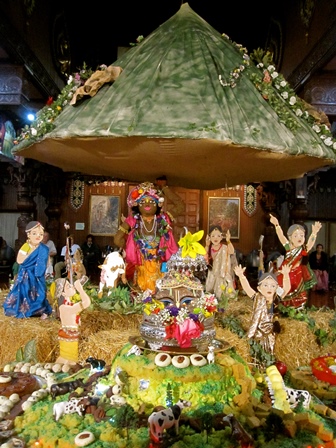




 By Romapada Swami
By Romapada Swami






 By Yolanda Amelia
By Yolanda Amelia




 Kartik Festival(
Kartik Festival( Dipavali and Govardhan Puja
Dipavali and Govardhan Puja
 Gift Shop
Gift Shop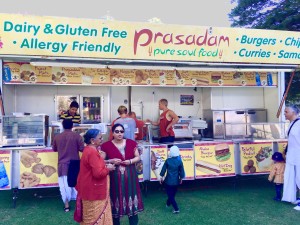
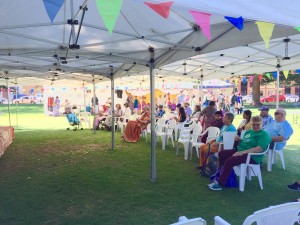
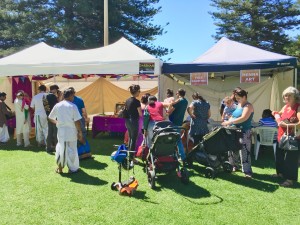
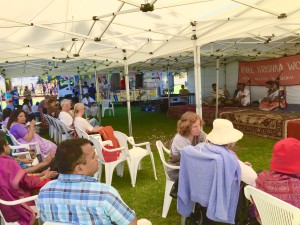


 By the Radha Kunda Seva team
By the Radha Kunda Seva team

 By Anantacarya dasa
By Anantacarya dasa By Kesava Krsna Dasa
By Kesava Krsna Dasa



